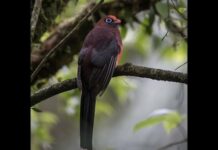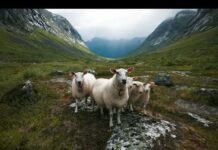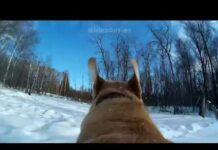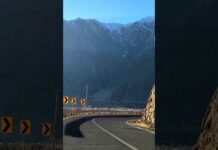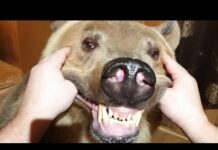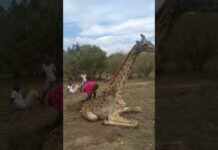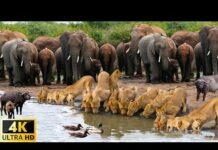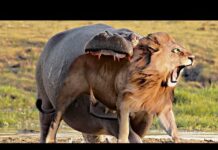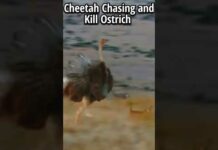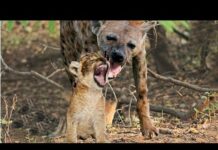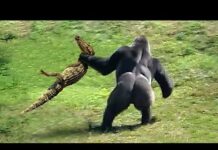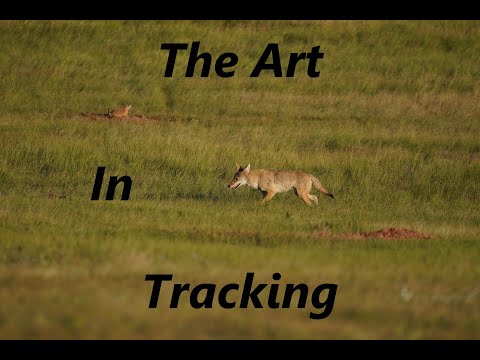In this first episode of woodsmanship for nature photographers, I am going to share some methods on tracking, identifying and locating wildlife.
••• FOLLOW ME •••
Instagram: https://www.instagram.com/staffordfuhsPhotography/
••• MUSIC •••
I am using music from Epidemic in this video.
Keep Moving.
You you you alright guys welcome back to the channel appreciate you tuning in today we're gonna do some woodsmanship tracking and identification of animals so I guess first off woodsmanship is the ability to.
Kind of go through the forest and understand what's going on as far as being able to track animals identify animals the natural process of the forest as far as spring winter fall those types of things and and one of the things I think Wildlife Photographer struggle with or at least a lot of them that I see is the fact of identifying.
Animals and actually being able to locate animals so many times I'll see them actually just stick to the trails and whatever comes along they photograph but they don't really track them they don't really know how to find them so I'm gonna try to give you ten steps that will or ten tips that'll help eliminate some of the confusion now some of my.
Background in the past when I was a kid growing up I used to fish trap and hunt and so some of these skills kind of obviously transfer over to wildlife photography but anyway if you stick around we'll get more into this I'll start breaking some things down so let's talk real quick some of the obvious things on your mind is why why should.
You have to learn you know the bushcraft or the work woodsmanship be able to track animals I could just put a game cam town as what you're probably thinking well they are they are effective in some ways but there's a lot of drawbacks to game cameras one they kind of trashed the environment they become more of a nuisance here in.
Nebraska sometimes they're illegal to even put up but they're some of the some of the drawbacks is you have to actually put them up and take them out so there's two or three trips and the minimum I mean if you're just going to go for putting it up taking a picture taking it down there's two trips right there obviously.
If you're gonna go back and forth over a period of course of a week or something you're gonna burn gas a lot of people kind of peter out when they're using game camps but put it up maybe go back a few times and they just leave it up and so that being kind of trashing the forest doing those kinds of things they take.
Batteries people bolt them on to trees very tightly because they don't want to you know people stealing them so there's a whole slew of issues with game cameras but when it comes to you know a game cam or a trail cam compared to woodsmanship of tracking an identification they're kind of two different things but you can save yourself some effort so I've never.
Used a game cam to be honest most of the time I'm in the forest I'll just be scouting around looking for things so some of the benefits of being able to track and identify and locate animals is the fact that you're able to get in and get out of an area pretty quick so you can analyze the environment and say okay is this have a lot of deer here is it.
Have a lot of raccoon or or mink or whatever the species you're looking at so within an afternoon you can get in and get out and hopefully get a get a rough estimate so it's good for one-shots where you gotta go in hiking area scout it out and you're in and you're out you don't have to go back kind of waste your time and sometimes.
It's just not possible to go back to an area you know you might have to go back in six months or a year maybe if you take that trip so those are some of the benefits over trail cams and speaking a trash I got a deer a deer stand right next to me that's been off probably for ten or fifteen years over to the the east this field is public hunting and.
I'm gonna take you back in the forest back here so we can look at some trails in that but that's this is closed off to hunting so a lot of animals are still very very scared of people and rightfully so with hunting going on here it is the spring it is probably 20 degrees and and another month or two this force will look nothing like what.
It is right now simply from the growth and I'll show you a couple pictures what this stuff looks like it's it's almost you once you get in it you can't really even photograph in it is so so thick so anyway I'll get you around let's talk all right to get started in animal identification tracking in that you're gonna probably going to need two.
Different things that would suggest one I have an actual app on my iPhone it's called eye tracker not affiliated with them I just seen it it looked pretty good it gives you the animal tracks their sizes classification for North America at least I'm pretty sure they'll probably do it for most places and then a book if some sort of like a big.
Reference book so Amazon's got ton of them I would suggest you get something pretty good quality you want to look if you're looking at what's a classification book animal classification book look for something that has multiple science suit just not they're they're they're paw prints or their tracks something that has maybe.
Pictures are their animal droppings they're their signs they're scratch marks they make on trees or something along those lines their dens get something that's worthwhile now you have to remember these these books these reference material is just that it's like a dictionary it gives you everything possible that that you have.
To consider you know across the board so that becomes very very problematic if you're trying to look for something so a lot of times for instance the forest here that I'm in I probably got only 20 or 30 animals that I really have to worry about so some of these books have hundreds or thousands and they could be a thousand pages again and and so you.
Kind of have to narrow this down so the tips I'm going to give you the methodology I'm going to give you is classification and elimination is the first part and then it kind of goes from the different science so you have to think of it this as this way is a lot of times I don't get a good paw print or a good track so I have to actually look at.
The ground kind of get a partial print and I have to be able to figure out from there so I might go look for some different droppings I might look for how the trail works I might look for fur or some scratch marks I might look there then I can have to get an indication of what's going on as far as what the population level is and that's really.
What you're looking for is you know if you see a lot of droppings in an area a certain animal that's a very good indication but yeah you got to be able to figure that out first but I'll take you back here let's get walking around and yeah we'll talk about the first two tips here out of ten of what will get you rockin and rollin and kind of help.
Eliminate the chaos okay let's talk first tip first thing to look for to here's looking dude is classification two things you know when you find a track a lot of times I'll ask someone if I'm if I'm messing around in the forest we find it a track I'll say hey you know what what what kind of tract is this animal gallant you know.
What what is this animal you can kind of see going through their head they're like well if they're thinking of every animal possible like they're they're thinking African lions they're thinking tangos they're thinking everything being North America I think I mentioned before we only really have 20 animals so you could just see the wheels turning and it.
And it can be a daunting process when you really don't do the process of elimination so some of the things we use here at least I use is okay and if I see a track or something that's a little bit off and it belongs to an animal I'll ask for the most part you know where I'm at what location of Maya is this water based or is this land based and what I.
Mean by that is do I think it's a water based animal or do I think it's a land-based animal a lot of times I can figure out one way or the other just by my location so if I'm by a swamp or someone that somewhere that's got a lot of water that gives me a little bit better indication and it let's say if I'm six miles into a cornfield I'm in.
The prairies let's say you know let's talk you know el antelope prairie dogs those animals obviously they like dry land you know muskrat mink beaver raccoon are more swamp based marsh based animals and so if you're in one of those environments more than likely you can class of classification elimination kind.
Of thing you know is that thing does it does it like water more than it likes land that kind of situation where you can figure out and and make somewhat of a determination not a hundred percent because some go back and forth but at least you you have a good indication of getting of eliminating half of the possible things so if you have 20 or 30.
Animals in an area possibility you know you got 15 right so all right let's talk the second step so the first the first two we mentioned land-based animal water based animal to the next three is an animal size print or is the animal small medium and large so obviously you know I put footprints like a quarter size of something or smaller silverdollar maybe.
Something along those lines so something small here in North America is gonna be zero to eight pounds something medium-sized is going to be eight to fifty five pounds and something large obviously is 55 pounds all the way up to thousands of pounds so something small quarter-sized animal track you know squirrel rabbit mink muskrat something.
Medium-sized beaver Kyah fox raccoon badger something larger size obviously you're talking you know deer elk antelope mountain lion that kind of thing so knowing that you can kind of look and if you get a small track you can kind of compare it against something that you have and once you get a basis for one or two animals the rest will.
Kind of fall into place the other thing that helps give it away is if you can find like a muddy or snowy area especially muds work like a really sloppy mud animal tracks appear to be a little bit bigger because the animals spread their paws out to not sink in the mud so much but that at least gives you a rough indication you're able to be.
Able to get a good print and it's the depth of the front the print as well so if it's muddy you know muskrat mink and these small animals they're really good about kind of just going on the surface of snow and that they have to just survive because they're getting chased by other animals so they don't sink in nearly as much as.
A coyote that's what keeps them alive and if you look at the mud you're able to look at how far down the animal sinks obviously something like like us 200-pound guy you put him in mud he's going to go in 2 or 3 inches a 50 pound animal is gonna maybe go in and half inch quarter inch – if it's really sloppy and a muskrat or me maybe maybe.
Not even a fifth of an inch or something it's just something really small so you're able to figure out I know it's common sense but a lot of people just don't use that when they're actually looking at that like wow what could that be well it's obviously small so you could use that as a classification so we got five things.
Right now water based land-based small medium large that we can use to figure out what this animal is if we come across some size I hope that helps now let's get in the fun part was actually looking for looking for signs looking for pieces that we can use to actually locate the animals so you know where can we find these signs you know where where.
The best places to find these signs that's that's the fun part all right first tracking first tracking piece obviously trails common sense right so what you want to try to do is is find where you have the most trails intersecting it's common sense I know but sometimes it just kind of escapes us here back here there's a trail I got a.
Main trail here I got some trails back there have another trail there so we have about three or four trails do your trails this would be a fairly decent ambush point if you were to set up find out where you want to set up to photograph them coming through now in another month this area will be totally not photographic so much weed so much.
Undercover but looking for signs when you have intersecting trails obviously that that is a big big bonus I mean it just sticks out the more intersecting trails the more areas where you have maybe a big trail and smaller trails to go off of it that's the good stuff where kiyo deer the go along a trail they're taking to take trails the least.
Amount of least amount of resistance you know they're trying to save energy by not pushing through weeds not pushing through deep snow if there's something's plowed they're gonna take that during the winter they're not going to burn calories or what-have-you so yeah trails is a good one intersecting trails more trails the better.
All right natural bridges natural natural you know yet man-made bridge isn't he got natural bridges that I showed you that shot of me cross and all all unsure footed for a reason it's it's because you could either go through the water to swamp there's there's a pond here and pond on the other side well or you could take take the land the natural.
Bridge which a lot of animals will do you know if they're if it's winter especially they want to keep warm they don't have to go through the water they don't have to make a lot of noise if they're hunting and it's a nice silent way to get across some land obstacles you know these bridges here you want to look for this is a small one but if you.
Get to get into a big ravine a big Creek I'll show you one here in a sec if you get one that goes across the ravine you can get everything across that you know you can get Kyle Fox Bobcat whatever but that being said it's really easy for these guys to cross this way look for it it's a funneling mechanism because if it's a big ravine they don't want to.
Have to go down and go back up obviously they're gonna have to they're gonna take the path of least resistance which is across the tree now looking for signs a lot of times before and after sometimes in the middle they'll go the bathroom you know hey opossum and raccoon or notorious for that empty their bladder one way on either side of it but it's.
It's one thing just another little trick up your sleeves to get some kind of sign some kind of identification and if it's muddy you can look on like if it's a bare log you can look for tracks there you can look for hair if their sticks coming up and all that kind of stuff but they definitely have to take this or they're gonna go through a lot of water.
Get cold burn calories that kind of thing so hope this helps I'll show you another I think I already mentioned this I'll show you another another land bridge that's a lot bigger and it's it's more enticing I think to them as well all right guys got behind us a Natural Bridge tree fell down across the ravine really steep got water.
Here so definitely going to be used by the animals the steeper the ravine the bigger the obstacle the more likely that animals are going to use it and if there's not a lot of them around that kind of pinpoints that funnels that pinpoints things right to where you want to be and just a nice place to pick up some more actual tracking down below.
Here we got the mud we got raccoon tracks I think I'm gonna have to look closer and a bunch of animal tracks off to the left is another land bridge natural one that just fell down this year too so we got two now that's not as I ideal but you take as much as you can get right guys speaking of that we just had a squirrel crossed away yeah that.
Squirrel over there you just crossed that land bridge right in front of me he's not afraid of me at all oh my gosh look at that he's coming down to get some water so again these bridges are awesome all right guys this is an area where you can see some paw prints and that more than likely raccoon from when I'm picking up but they're older kind of.
Washed away see if I can get you down in a couple of these areas here that kind of stuff like there's a good one see these little paw prints now these are older because you just tell they're just kind of washed away by the river by the creek but at least it's something to give you a rough indication that there's.
Animal life now if this was really heavily used it would just be a complete mess would be just an absolute mess but it's easy to spot from up above out a creek or something like that because it just looks like paw prints everywhere alright guys that is an awesome language right yeah straight across you got a big drop-off yeah that works.
Alright guys it's bright out get the sunglasses don't necessarily like these but hey whatever like having them on we had a snowstorm this is kind of version 2 we stopped at the land bridges Natural Bridges yesterday a little bit and you know being that there's a snowstorm that came in out of nowhere it's awesome for tracking so this snows you know less.
Than a day old so any kind of tracks we find they're new they're good and it doesn't get any easier if you can find tracks and the snow use it use it use it or right after a snowstorm go go go that that's fresh tracks there's not a lot of science behind it you don't have to worry about it so anyway off to my left I have a.
Drainage pipe going under a road and that's a really good spot to look for small animals cow it's bigger animals medium-sized animals generally go over but when you're looking at drainage ditches or tubes or pipes that that circulator push water we have a farming field here runoff goes under there under this road back here and then it actually.
Goes off to into the swamp so it's a nice it's a nice way travel mechanism and conspicuous these guys will go will use this all the time so anyway let's get rocking and rolling we'll see if we can find some tracks here all right so find a tunnel here man-made tunnel we got a road above us we got a.
Cornfield behind us we've got some swamps off to the west here so a lot of this area gets flooded and the water Ave obviously goes on here but this is a great funneling technique for animals to kind of burrow in or be able to use waterways and that for transportation instead of going above on a road they'll go underneath that you could locate go.
To a lot of different construction places bridges anywhere where that that's happening you're gonna usually find tracks and snow wet muddy area easy to easy locate easy to find and kind of see their numbers and you really don't even need to go down in it if you can see it from a distance and it's just all mud and it's not a mess then you're.
Probably not getting a lot of traffic there just FYI so nice area you know if you you had heavy traffic here you might put a blind off off to the west or east of it and just wait in the mornings more than likely they're gonna be using it for moving back and forth so anyway we'll get moving alright guys probably seen that little.
Snippet to me stepping over stuff one of my favorite tracking mechanisms is stepping sticks so stepping stick is any kind of obstacle any kind of barrier it could be a fence it could be a barbed wire fence barbed wire fence of anything along those lines that give they give a mechanism for the animal to wear out put some energy in before they cross the the.
Barrier and then when they land so think of a deer and a big tall fence it has to put energy into its feet before it actually hits the other side of the ground in that so that's a that's a nice point here so this has an added benefit of you can see under here too so bigger animals gonna go over tops gonna land out here smaller animal you can track.
Underneath that part so that's a nice thing if you're looking for multiple tracks or you get lost with one or the other you can look how far out the the tracks are obviously the bigger the animal the more spacious the track markings another trick in which some guys will do old trappers used to put down Ash and they would actually put in.
The trail much like snow just put it out there and maybe come back in the next day or two and check out see if something's been by if they don't have any leads if they can't if they don't have any moisture or anything to go off of but yeah steppin sticks is a big one there's ways to set it up you can put in your own steppin stick a big log small.
Log in a trail and then put that ash down or water make it sleepy if you're gonna be back there the next day the benefit of that is you can kind of put two or three so the animal kind of puts his foot in between each one I know trappers used to do that where they put two or three down and and kind of you know make the animal put it into.
Their paw in a specific spot to catch them but for you for anybody if you don't have a trail cam or you don't want to use one you want to come back maybe it's illegal these are really good spots because generally they just tear up the place they also leave fur underneath above and underneath so that is another mech.
Hasn't kind of figure out what kind of animal is in the area but definitely stepping sticks are everywhere generally I like to there's a saying match the hatch which fishing term you want to match what the animal eat or that or their size right size of the fly size of the bait to whatever they're doing so stepping stick there's going to be a big.
Animal that comes over the top medium size big animal obviously underneath smaller animal if you create a stepping stick in a trail or some sort smaller stick smaller animal bigger you know bigger animals not gonna really care all that much but it works see if it works for you guys okay guys small little thing here here's.
A looks like a cow track right in here it's kind of a soupy mess right now but here's the log and here's kind of the natural trail that they're using anyway can kind of see if you go up a little bit how all the trees and stuff are matched down or just pushed around so this could be definitely beaver or taking this looks like a coyote was here.
Recently just rough estimates and yeah these are that's kind of stepping stick you noticed you notice right here there's more of an impact so they get this guy where he is he went he went over this so he pushed off couldn't get a track here but definitely in this area there's there's possible they're definitely tracks.
Obviously identifications a little rough right now okay so a lot of times you just walk right back thing right past things if you don't really recognize it what's going on anyway I was on the gravel road right behind this couple weeks back and get some footage of some beaver this area hasn't had beaver in it for years but one thing that jumped out.
Immediately as I was walking by most de forests at this time of year is kind of a dark gray almost dead look but this here is a nice bright kind of brown look so I immediately seen it a couple weeks back I started looking in the waterways more now normally I wouldn't look in the water he's certain some of these.
Waterways for beaver there was just something that this was a dead key and and there's other signs in here once I started looking closer but stuff really jumps out at you when you're looking for it so I needed the kind of animal science you know you're talking markings on trees droppings obviously the tracks the dens and all that but this is stuff.
It's easy to spot if you got a beaver in the area it's real easy because they start just crushing the trees and they're kind of more of a nuisance because it's always a battle between you know beavers and deer because they both like trees but one of them's killing one of them's killing the trees the other one wants them to live there but yeah.
This is good we got that it got that video footage it's like 15 20 seconds on Instagram I might put it up on YouTube as well but it just allows you when you kind of recognize this kind of stuff allows you to kind of keep an eye out keep looking for it anyway good stuff all right so we've got multiple tracks here that intersect.
We've got a stepping stone I'm kind of sitting on funneling in to one trail this is this is awesome this is good sign good signs no matter no matter who you are right so you got three or four trails intersecting going into one right behind you I showed you the video the beaver gnawing on the tree those tree marks so.
Putting all this together I mean it's it makes things really easy when you get multiple signs now you don't always get like a perfect print that's that's the thing that's what makes it so difficult people kind of give up it's like well I can't identify it well if you get a print then you got to look it up in a book and you got to do all these other.
Things it makes it it makes it difficult I appreciate you if you guys have watched this far is a long video I don't ever want to make one this long again because it's yeah it's a lot of work but get the waterways you get all this piece together and that's what it's about hopefully you've followed me along on this I can.
Say some of the things here is scouting during the middle of the day you want to scout during the middle of day don't want to go real early or real late at night because or later because animals hunt during that time and their scent is very good or their ability to pick up scent with what we call entrapping the scent plume where you have animals that.
Your scent is left on logs and everything it's more prevalent and stronger during the morning and at night because they're all it has to do with the heat and the cold of you know putting things to the ground so animals obviously do that that you know in the mornings and in the evenings they're actually moving around so if you go up.
To a den if you go up to anything like that you're more probable to scare it away and believe me I've been busted on this just a word of advice it's going to be it's gonna not be fun for you let's say you find that perfect fox den and you scare them out of that and you've done all this work you've gone through hours.
Trying to figure out where they're at and man you got it and all sudden they move on and then you're starting from square one so do yourself a favor go go you know eleven o'clock to four o'clock be cognizant of your scent you know don't don't bathe in the gasoline don't do these things just doubt it's a total different video I could put out about.
St. control I mean this is a deep subject it's not easy so I appreciate you guys hanging in there and I want to conclude probably getting a car a little less windy starting to pick up around here and we can kind of wrap this thing up all right back in the car getting out of the wind that annoys me looking at or.
Having to deal with the wind and the videos I apologize for any of that stuff I am going to figure that out that's been my nemesis here anyway yeah a lot of a lot of material a lot of material woodsmanship tracking you know the tracking identification piece is just a small part of the woodsmanship and I think a lot of a lot of.
Photographers are going to want it need it you know congratulations if you sat through this 99% of the people it's just long it's it's very and you know very detailed my new kind of stuff and and you know to be honest I know a lot of wildlife photographers that really don't know any of this stuff but you know they don't really hold know a.
Whole lot about the animals either so they prefer to go to the big parks now you know Yellowstone glacier you know go to Africa kind of thing take those trips you can buy them all-inclusive they got that cars the trucks they just put you on a tripod and you shoot me shoot sadly in the middle of the day when the Lighting's horrible but you can kind of.
Tell I know some people don't have access or don't have the ability to move around but if you do I think a lot of photographers just like me you don't have access to the big parks and you need a way to get close to the animals and they're pressured and that's part of what this channel is about hopefully getting close to two animals that are.
Somewhat pressured because believe me it's a challenge this is a hunting area I have to use everything I got to get close to to the wildlife because they're obviously afraid and and you know camouflage and and stalking everything is gonna be a part of this channel and yeah I appreciate it so if you like if you like this stuff subscribe hit the.
Notification button got some other videos other videos coming around the pipe turn we're talking you know deer and squirrel I think the next one would be squirrel announce you're thinking oh man not another squirrel video every Wildlife Photographer but this is gonna be different this is we're gonna talk about getting into the forest trying to.
Get the forest back to nature back to this peaceful thing as soon as possible you know the problem the problem with a guy like myself or you you know you're 200 pounds you might have a lot of gear which you're gonna make a lot of noise and that stuff and enforce man that really scares things so if you can get it and you can really make get in and.
Get nature back and work into where you weren't even there that's all the better and so there's some techniques we can apply it to make that happen so if you're in a ghillie suit or something there it's like you're invisible hopefully five 10 15 minutes later you walk in you're productive so that's part of what this.
Processes or what the videos will be about and anyway if you don't like you don't like my channel hey there's other guys out there Joe Morano Tron West be Simon wanting I think and of course the famous Morton Helmer those guys it's a lot of work what those guys do so hey you don't have to support me just support them because.
It's all good we all learn off each other until next time guys appreciate it and keep moving you
We are excited to present to you the captivating video titled “HOW TO FIND WILDLIFE to photograph”. Get ready to embark on a journey of enjoyment, smiles, and laughter as you watch this delightful creation. “HOW TO FIND WILDLIFE to photograph” is a perfect blend of entertainment and amusement, carefully crafted to bring joy to your day. From the moment you press play, you’ll be greeted with a cascade of lighthearted moments, heartwarming scenes, and perhaps even a few surprises that will tickle your funny bone.
Whether you’re in need of a quick pick-me-up or simply looking for some light-hearted entertainment, “HOW TO FIND WILDLIFE to photograph” has you covered. The video promises to deliver a collection of moments that are bound to leave you grinning from ear to ear. With its engaging content and skillful presentation, “HOW TO FIND WILDLIFE to photograph” is more than just a video – it’s an experience designed to brighten your mood and spread positivity.
The creators of “HOW TO FIND WILDLIFE to photograph” have poured their creativity and dedication into crafting a visual treat that resonates with audiences of all ages. Through expert storytelling, impeccable timing, and an array of engaging content, “HOW TO FIND WILDLIFE to photograph” promises to be an unforgettable journey that lingers in your memory long after the video concludes.
So sit back, relax, and prepare to be entertained as you dive into the world of “HOW TO FIND WILDLIFE to photograph”. It’s a delightful video that aims to bring a dose of happiness to your day, leaving you with a lasting smile and a heart full of laughter.
This video was uploaded in youtube and has recieved 416 views so far. This is a great achievement and laso it has received 19 likes and .
Data bout the video:
Rating: ,
Video dimensions: 2d,
Video definition: hd,
Video duration: 00:33:15,
Video favourite count: 0
Video comment count: 10


